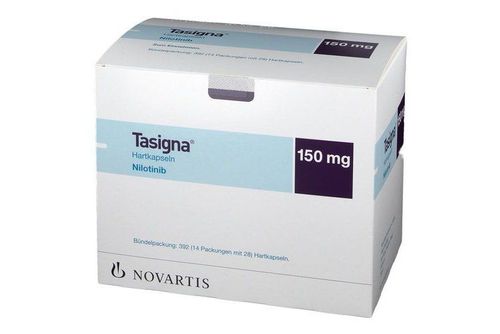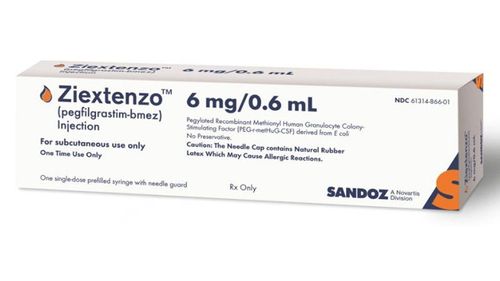This is an automatically translated article.
What does Filgrastim do, does it stimulate the production of white blood cells to protect the body from infection? In fact, Filgrastim is a drug that regulates the production and mobilization of leukocytes to increase leukocyte proliferation in a number of conditions where the neutrophil count is low due to various causes.
1. What is the effect of Filgrastim?
Filgrastim belongs to the group of leukocyte growth stimulating factors, whose main ingredient is Filgrastim. Filgrastim stimulates leukocyte production by regulating the production and mobilization of neutrophils from the bone marrow and also elsewhere (possibly from the spleen).
Filgrastim is prepared in the form of injections, packaged in vials or syringes with concentrations of 300μg/ml, 480μg/1.6ml, 600μg/ml and 960μg/ml. Filgrastim is indicated for the treatment of neutropenia with fever or agranulocytosis due to cancer treatment by chemotherapy, patients receiving myelosuppressive drugs to prepare for transplantation surgery. marrow, congenital or cyclic neutropenia or idiopathic.
2. Usage and dosage of Filgrastim
Filgrastim is administered by subcutaneous injection or intravenous infusion over a period of 15 - 60 minutes. The medical staff or doctor will administer the drug to the patient.
Note about Filgrastim treatment, the patient needs to continue taking the drug until the neutrophil count exceeds the expected lowest level and returns to normal.
Dosage of Filgrastim in adults is as follows:
For patients undergoing chemotherapy for bone marrow suppression: Subcutaneous injection or intravenous infusion over 15 - 30 minutes at a dose of 5μg/kg body weight/time/ day. Filgrastim should not be used 24 hours before and after chemotherapy. For cancer patients undergoing bone marrow transplant: Intravenous or continuous subcutaneous infusion for 24 hours at a dose of 10μg/kg body weight/time/day. After chemotherapy or marrow infusion, the drug must be taken for a minimum of 24 hours. It is necessary to monitor the white blood cell count during the recovery of the neutrophil count and the duration of Filgrastim treatment can be up to 2 weeks, when the leukocyte count reaches 10,000/mm3. For bone marrow transplant patients requiring hematopoietic cell mobilization: Subcutaneous injection at a dose of 3.5 or 10 μg/kg body weight/time/day, injection for about 10 days. For patients undergoing myeloproliferative or myelosuppressive therapy requiring peripheral hematopoietic cell mobilization: The single dose of Filgrastim is 10μg/kg body weight/time/day, administered continuously for 5-7 days. After myelosuppressive chemotherapy, a dose of 5 μg/kg body weight/day was administered until the neutrophil count returned to normal. For cancer patients who need to mobilize hematopoietic cells: Injection or continuous subcutaneous infusion with a dose of Filgrastim of 10mg/time/day, used for at least 5 days before the first leukocyte separation and continue to be used for to the final separation of leukocytes. For patients with severe chronic neutropenia: Filgrastim is administered subcutaneously at a dose of 6 μg/kg body weight/day. For congenital neutropenia, this dose is divided into 2 doses. For cyclic or idiopathic leukopenia, use 5 μg/kg body weight once daily. For patients with neutropenia while undergoing cancer chemotherapy: Use Filgrastim at a dose of 12μg/kg body weight/day, administered within 12 hours of treatment with piperacillin and tobramycin. The drug is more beneficial for patients with infections and neutrophil counts less than 0.1x109/litre. For HIV neutropenic patients and being treated with antiretroviral drugs: Use dose from 5 to 10 μg/kg body weight/time/day and use for 2-4 weeks. The specific dosage of Filgrastim in children is as follows:
For children with congenital neutropenia: The initial dose is 6μg/kg body weight/day, used twice a day. Depending on the neutrophil count and the clinical course of the disease, the dose should be adjusted accordingly. For children with neutropenia due to cancer chemotherapy: The initial dose is 5μg/kg body weight/time/day. If there is no response to Filgrastim after 5-7 days, the dose can be increased to 5 μg/kg body weight with each chemotherapy cycle. Use for up to 2 weeks or until the neutrophil count reaches 10,000/mm3. For children with neutropenia due to HIV infection and taking antiretroviral drugs: The dose of Filgrastim for children over 15 years old is from 5 to 10μg/kg body weight/time/day, taking the drug for 2-4 weeks. Filgrastim dosage in some other specific subjects is as follows:
HIV patients: The recommended starting dose is 1μg/kg/day, gradually increasing the dose until the neutrophil count returns to normal. The maximum dose should not exceed 4μg/kg/day. Patients with hepatic impairment, renal impairment: No dose adjustment is required. To date, research data on Filgrastim overdose are limited. If overdose, the patient is indicated to stop taking the drug to return the neutrophil count to normal levels.
3. Filgrastim side effects
Filgrastim may cause some unwanted side effects with the frequency of occurrence as follows:
Very common: Injection site reactions, fever, rash, exacerbation of skin disease, subcutaneous hemorrhage , hair loss. Nosebleeds, splenomegaly, increased alkaline phosphatase. Bone pain, muscle pain, lower back pain, iliac crest pain, sternum pain. Common: Filgrastim commonly causes nausea, vomiting, peritonitis, diarrhea, headache, increased or decreased blood pressure, myocardial infarction, arrhythmias, leukocytosis, transfusion reactions. Uncommon: Respiratory depression, wheezing, headache, dizziness, depression, neurotoxicity, cerebral hemorrhage, alveolar hemorrhage, convulsions. Facial edema, skin vasculitis, dyspnea, erythema nodosum, hemoptysis, hepatomegaly, hematuria. Filgrastim rarely causes pericarditis, osteoporosis, hypersensitivity reactions, urticaria. Pulmonary infiltrates, rupture of spleen, renal failure, exacerbation of psoriasis. Thrombocytopenia, transient supraventricular arrhythmias, tachycardia, thrombophlebitis. Rare: Filgrastim rarely causes Sweet's syndrome, severe sickle cell anemia, capillary leakage. Spleen rupture, pseudo-gout syndrome, acute pain of rheumatoid arthritis. If you see any strange symptoms after taking Filgrastim, you should immediately report it to your doctor or go to a medical facility soon to be checked.
4. Some notes when using Filgrastim
Do not use Filgrastim in people with hypersensitivity to the components of the drug or the proteins of E. coli, the elderly. Do not take Filgrastim 24 hours before and after chemotherapy. People with myeloma need to be careful when taking Filgrastim, because it can cause tumors to grow, especially malignant myeloma. During treatment with Filgrastim, the patient should be monitored for body temperature and platelets, white blood cells, hematocrit, blood uric acid, liver function and urinalysis. Stop taking the drug when the white blood cell count rises above 50 * 109 / liter. After 30 minutes of intravenous infusion, Filgrastim can cause allergic reactions with manifestations of hypotension, tachycardia, rash, itching, difficulty breathing, wheezing. People with sickle cell anemia should use caution when taking Filgrastim. Patients with hepatic impairment, renal failure, history of vasculitis, systemic inflammation have a higher risk of adverse events. Pregnant women should only use Filgrastim in cases of absolute necessity, when the benefit to the mother outweighs the effect on the fetus. Women who are breast-feeding should use caution when taking the drug. Limit driving or operating machinery after taking Filgrastim, as it may cause dizziness. Filgrastim may interact with and increase circulating white blood cells when taken with plerixafor. Therefore, it is necessary to monitor the white blood cell count and if the patient has a white blood cell count above 50,000/mm3, caution should be exercised when using the drug. Filgrastim should be used with caution, especially when used with lithium, which increases the release of neutrophils. The white blood cell count is severely reduced when the drug is taken with 5-fluorouracil. If Filgrastim is co-administered with topotecan, the potency and concentration of topotecan may be increased. When taking the drug Filgrastim , attention should be paid to the consumption of products containing sodium. Do not mix Filgrastim with saline for injection because the drug may cause precipitation. The use of Filgrastim is to stimulate white blood cell production by regulating the production and mobilization of leukocytes from the bone marrow or some other place, to treat congenital neutropenia, cyclic neutropenia. Periodic or idiopathic, leukopenia in cancer chemotherapy patients.
Follow Vinmec International General Hospital website to get more health, nutrition and beauty information to protect the health of yourself and your loved ones in your family.
Please dial HOTLINE for more information or register for an appointment HERE. Download MyVinmec app to make appointments faster and to manage your bookings easily.













